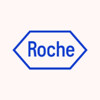
Extended Dosing With Eltrombopag for Severe Aplastic Anemia
Severe Aplastic Anemia (SAA)Background: - Eltrombopag is a drug being tested for treating severe aplastic anemia. It can help improve blood counts in these patients. However, researchers do not know how long the drug can and should be taken for this type of anemia. Objectives: - To look at whether 6 months of treatment with eltrombopag can improve patient s blood counts. Eligibility: - Individuals at least 2 years of age who are taking eltrombopag for severe aplastic anemia. Design: Participants will take eltrombopag by mouth once a day for 6 months. Blood samples will be collected every 2 weeks for the first 6 months. Bone marrow samples will be collected at 3 and 6 months. These samples will look at the effects of the study drug on the marrow. Participants will continue to take the study drug for as long as it is effective and if the side effects are not severe.

Comparison of NovaFerrum® vs Ferrous Sulfate Treatment in Young Children With Nutritional Iron Deficiency...
Iron Deficiency AnemiaThis study is a randomized, controlled, double-blinded single center trial to compare the efficacy of NovaFerrum® to ferrous sulfate for the treatment of nutritional iron deficiency anemia (IDA) in infants and young children. Hypothesis: NovaFerrum® has greater efficacy than ferrous sulfate in increasing hemoglobin concentration during a twelve week course of treatment to subjects with iron deficiency anemia. Primary Aim: To compare the efficacy of NovaFerrum® to ferrous sulfate for the treatment of nutritional IDA in infants and young children as determined by increase in hemoglobin concentration. Secondary Aims: To compare the adverse effects of treatment for IDA between ferrous sulfate and NovaFerrum® To compare normalization of iron stores as demonstrated by laboratory measures of IDA (ferritin, TIBC, reticulocyte hemoglobin content) between subjects treated with ferrous sulfate or NovaFerrum® To compare the adherence to study medication between subjects on ferrous sulfate and NovaFerrum® To demonstrate efficacy of a once daily dosing regimen in the treatment of nutritional IDA

Ferumoxytol for Iron-Deficiency Anemia in Chronic Kidney Disease and Peritoneal Dialysis Patients...
Iron-Deficiency AnemiaInflammation1 moreThe purpose of this study is to investigate the efficacy of ferumoxytol for the repletion of iron stores and correction of iron deficiency anaemia in patients with severe chronic kidney disease or end-stage chronic kidney disease on peritoneal dialysis, and to assess the impact of the administration of a ferumoxytol dose on various markers for iron stores, as well as on various markers for inflammation and oxidative stress.

Safety and Efficacy Study for AKB-6548 in Participants With Chronic Kidney Disease and Anemia
AnemiaKidney DiseaseThe purpose of this study is to evaluate the safety, pharmacodynamics and pharmacokinetics of repeat doses of orally administered AKB-6548 in pre-dialysis participants with anemia.

Phase II Pilot Study of Granulocyte Colony-Stimulating Factor for Inherited Bone Marrow Failure...
Shwachman SyndromeFanconi's Anemia2 moreOBJECTIVES: I. Assess the efficacy of recombinant human granulocyte colony-stimulating factor (G-CSF) in raising the absolute neutrophil count, platelet count, and hemoglobin level in patients with inherited bone marrow failure syndromes. II. Assess the efficacy of a reduced maintenance dose in patients who respond to daily G-CSF. III. Assess the toxic effects of G-CSF in these patients. IV. Measure bone marrow progenitor colonies before and after G-CSF. V. Measure CD34-positive cells in marrow and blood before and after G-CSF using flow cytometry and immunohistochemistry.

Efficacy and Safety of Intravenous Ferric Carboxymaltose (FCM) in Patients With Iron Deficiency...
Iron Deficiency AnemiaThe main objective of this study is to demonstrate the efficacy and safety of an investigational intravenous (IV) iron, ferric carboxymaltose (FCM), compared to oral iron in subjects who have iron deficiency anemia (IDA) and have shown an unsatisfactory response to oral iron.

Horse ATG/CsA in Aplastic Anemia Patients Unresponsive to or With a Suboptimal Response to Rabbit...
AnemiaAplastic2 moreBackground: Severe plastic anemia can lead to problems with bone marrow platelet production and result in low blood platelet counts, which require frequent platelet transfusions to improve blood clotting. A standard treatment for SAA involves injections of rabbit-antithymocyte globulin (r-ATG). r-ATG is developed by injecting horses with a type of human white blood cells called thymocytes. The horse's immune system reacts against these cells and makes antibodies that can destroy them. These antibodies are collected and purified to make r-ATG. Horses can also be used for this procedure to make horse-antithymocyte globulin (h-ATG). h-ATG is approved by the Food and Drug Administration for the treatment of aplastic anemia. h-ATG is a standard first-line method to treat aplastic anemia, but researchers do not know how effective it is in patients who were first treated unsuccessfully with r-ATG. Objectives: - To evaluate the effectiveness and safety of horse-ATG (with cyclosporine) in increasing blood counts and reducing the need for transfusions in aplastic anemia patients who have failed to respond to prior immunosuppressive treatment with rabbit-ATG and cyclosporine. Eligibility: - Patients 2 years of age and older who have consistently low blood platelet counts related to aplastic anemia that has not responded to conventional treatment with rabbit-ATG. Design: After initial screening, medical history, and blood tests, patients will be admitted to the inpatient unit at the National Institutes of Health Clinical Center. Researchers will perform a skin test with h-ATG to check for allergic or other adverse reaction. After the skin test, h-ATG will be given into a vein continuously over 4 days. Cyclosporine will also be given to improve the response rate of ATG treatment. Treatment with cyclosporine will start the same day as the h-ATG, either in liquid or capsule form, and continued for 6 months. The dose of cyclosporine will be monitored and adjusted based on blood levels and signs of side effects in the kidney and liver. To prevent or treat infections that may result from cyclosporine s effect on the immune system, patients will also take inhaled or capsule doses of pentamidine. After the study is completed, patients will have followup evaluations every 3 months, 6 months, and annually for 5 years. Evaluations will include blood samples and periodic bone marrow biopsies.

A Study of Once Monthly Subcutaneous Mircera in Patients With Chronic Renal Anemia Not on Dialysis...
AnemiaThis single arm study will assess the efficacy, safety and tolerability of once monthly administration of subcutaneous Mircera for the maintenance of hemoglobin levels in patients with chronic renal anemia not on dialysis.Patients will receive sc Mircera at a starting dose of 100, 120, 200 or 360 micrograms every 4 weeks, calculated from the last weekly dose of ESA previously administered. Subsequent doses will be adjusted to maintain hemoglobin levels within the target range. The anticipated time on study treatment is 3-12 months, and the target sample size is 100-500 individuals.

A Pilot Study of the Thrombopoietin-Receptor Agonist Eltrombopag in Refractory Aplastic Anemia Patients...
AnemiaAplastic3 moreSevere aplastic anemia (SAA) is a life-threatening blood disease which can be effectively treated with immunosuppressive drug regimens or allogeneic stem cell transplantation. However, 20-40% of patients without transplant options do not respond to immunosuppressive therapies, and have persistent severe cytopenias, requiring regular platelet transfusions, which are expensive and inconvenient, and are a risk for further serious bleeding complications. Thrombopoietin (TPO) is the principal endogenous regulator of platelet production and also stimulates hematopoietic stem and progenitor cells. A small molecule oral TPO-agonist, eltrombopag has been shown to increase platelets in healthy subjects and in patients with immune thrombocytopenic purpura (ITP), and received FDA approval in 2008 for the treatment of thrombocytopenia in ITP. This Phase 2, non-randomized pilot study of eltrombopag in aplastic anemia patients with immunosuppressive therapy refractory thrombocytopenia will test the safety and potential efficacy of eltrombopag treatment patients with refractory thrombocytopenia following immunosuppression for aplastic anemia. Subjects will initiate study medication at an oral dose of 50 mg/day, which will be increased up to 150 mg/day as clinically indicated to the lowest dose that maintains a stable platelet count 20,000/(micro)L above baseline while maximizing tolerability. Response will be assessed at 3-4 months. Platelet response is defined as platelet count increases to 20,000/L above baseline at three months. or stable platelet counts with transfusion independence for a minimum of 8 weeks. Erythroid response for subjects with a pretreatment hemoglobin of less than 9 g/dL will be defined as an increase in hemoglobin by greater than or equal to 1.5g/dL without packed red blood cell (PRBC) transfusion support, or a reduction in the units of transfusions by an absolute number of at least 4 PRBC transfusions for eight consecutive weeks compared with the pretreatment transfusion number in the previous 8 weeks. Neutrophil response will be defined in those with a pretreatment absolute neutrophil count (ANC) of less than 0.5 times 10(9)/L as at least a 100 percent increase or an absolute increase greater than 0.5 times 10(9)/L. Subjects with response at 3-4 months may continue study medication (extended access) until they meet an off study criteria. The primary objective is to assess the safety and efficacy of the oral thrombopoietin receptor agonist (TPO-R agonist) eltrombopag in aplastic anemia patients with immunosuppressive-therapy refractory thrombocytopenia. Secondary objectives include the analysis of the incidence and severity of bleeding episodes, and the impact on quality of life.

Nonmyeloablative Allogeneic Stem Cell Transplantation From HLA-Matched Unrelated Donor for the Treatment...
AMLALL7 moreAllogeneic stem cell transplantation may provide long-term remissions for some patients with hematological malignancies. However, allogeneic transplantation is associated with a significant risk of potentially life threatening complications due to the effects of chemotherapy and radiation on the body and the risks of serious infection. In addition, patients may develop a condition called Graft versus host disease that arises from an inflammatory reaction of the donor cells against the recipient's normal tissues. The risk of graft versus host disease is somewhat increased in patients who are receiving a transplant from an unrelated donor. One approach to reduce the toxicity of allogeneic transplantation is a strategy call nonmyeloablative or "mini" transplants. In this approach, patients receive a lower dose of chemotherapy in an effort to limit treatment related side effects. Patients undergoing this kind of transplant remain at risk for graft versus host disease particularly if they receive a transplant from an unrelated donor. The purpose of this research study is to examine the ability of a drug called CAMPATH-1H to reduce the risk of graft versus host disease and make transplantation safer. CAMPATH-1H binds to and eliminates cells in the system such as T cells that can cause graft versus host disease (GvHD). As a result, earlier studies have shown that patients who receive CAMPATH-1H with an allogeneic transplant have a lower risk of GvHD. In the present study, we will examine the impact of treatment with CAMPATH-1H as part of an allogeneic transplant on the development of GvHD and infection. In addition, we will study the effects of CAMPATH-1H on the immune system by testing blood samples in the laboratory.
